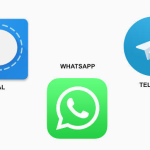Selecting the right Learning Management System (LMS) is crucial for efficiently achieving your training objectives. A well-chosen LMS not only delivers content effectively but also aligns with your organization’s learning goals, employee development needs, and overall business strategy. With countless options available, it’s essential to evaluate features, scalability, and user experience to ensure your LMS supports both learners and administrators.
By clearly defining your training priorities, such as compliance, skill development, or onboarding, you can identify a platform that enhances engagement, tracks progress, and measures results. Aligning your LMS with your training goals ensures a seamless learning journey, boosts employee performance, and maximizes the return on your investment in professional development.
Why Training Goals Should Guide Your LMS Selection
When choosing an LMS, many organizations focus on features first—but this approach only goes so far. The key question is: “What are we trying to achieve with training?” Different organizations have different needs; what works for a university may not be suitable for a company focused on compliance or onboarding. Prioritizing your training goals ensures every feature, integration, and design choice aligns with your objectives, preventing investment in a system that fails to support learners or deliver results.
Training goals influence every aspect of your learning strategy, from content and features to reporting and user experience. For example, if rapid employee onboarding is a priority, look for learning paths, progress tracking, and HR integration. Academic institutions, by contrast, may need tools for content creation, discussion boards, and grading systems. Clear goals help you focus on what truly matters, eliminating unnecessary distractions and ensuring measurable success.
Read More: 5 Surprising Truths About Powerline Adapters
How to Identify Your Training Needs
Choosing an LMS without a proper needs analysis can lead to a system that looks impressive but fails to support your learners. For instance, selecting a platform designed for schools with online classrooms won’t help if your goal is fast employee onboarding.
Define Your Audience
Practical training begins with understanding your learners the people who will engage with your courses and apply the knowledge in real life. Learners differ widely, so your LMS choice should reflect whether you are training employees, students, or customers.
Set Learning Goals
With your audience in mind, clarify what you want them to achieve. Defining clear objectives ensures your LMS supports measurable results. Ask: What is the ultimate goal of this training program?
Decide on Delivery Method
Consider how learners will access the training. Delivery method matters because not all LMS platforms support every style of learning. Options include microlearning, social learning, or immersive learning experiences.
Align Needs with Must-Have Features
Finally, match your training needs with essential LMS features. Creating a prioritized list helps you compare vendors effectively and avoid being swayed by extra features that don’t support your goals.
Common Training Goals and LMS Features to Meet Them
Academic Learning
For universities, schools, and professional development programs, an LMS organizes content, centralizes resources, and streamlines the delivery of lessons. Key features include virtual classrooms, quizzes, assignments, automated grading, and interactive tools such as discussion boards and group chats, all designed to boost engagement and collaboration.
Compliance Training
In regulated industries such as healthcare or finance, compliance training ensures that your business and employees remain aligned with legal requirements. An LMS should manage mandatory courses, deadlines, and certifications, while providing automated reminders and detailed reports for audits.
Customer Training
Customer education improves product adoption and loyalty. Practical LMS features include self-service resources, on-demand tutorials, multilingual support, and scalability to accommodate a growing global audience.
Employee Onboarding
Onboarding new hires becomes seamless with structured learning paths, progress tracking, and HR system integration. LMSs ensure consistent delivery of company policies, role-specific skills, and critical information.
Employee Training
Continuous employee development requires skill mapping, personalized learning paths, and gamification to boost engagement, track progress, and address knowledge gaps.
Immersive Learning
Simulation-based training enhances skills through real-world scenarios, VR/AR integration, and interactive modules, providing a comprehensive approach to skill development. Even role-playing and gamified courses can create lifelike learning experiences without high-risk environments.
Microlearning
Short, focused lessons enhance retention and accommodate busy schedules. Mobile-friendly design, push notifications, and bite-sized modules such as videos, quizzes, or infographics make learning convenient and consistent.
Sales Training
Interactive training prepares sales teams for real-world scenarios. Essential LMS features include video tutorials, scenario-based role-playing, and performance analytics to track skills and provide targeted coaching.
Social Learning
Peer interaction strengthens knowledge sharing. Discussion forums, collaboration tools, and peer reviews create learning communities, encourage engagement, and let learners benefit from each other’s experiences.
Guide For Matching Training Needs With LMS Features
| Training Goal | Must-Have LMS Features |
| Academic Learning | Course authoringGradingDiscussion boards |
| Compliance Training | CertificationsReportingAudit trails |
| Customer Training | Self-service portalMultilingual support |
| Employee Onboarding | Learning pathsHR integration |
| Employee Training | SkiMapping Gamification |
| Immersive Learning | SkiMappinging Gamification |
| Microlearning | VR/AR support, interactive modules |
| Sales Training | Mobile-friendly Bite-sized modules |
| Social Learning | ForumsCollaboration tools |
Frequently Asked Questions
What is an LMS?
A Learning Management System (LMS) is a software platform designed to deliver, track, and manage training programs for employees, students, or customers. It centralizes content, supports different learning methods, and measures progress.
How do I choose the right LMS?
Start by identifying your training goals, audience, and delivery methods. Then, match these needs to essential features such as progress tracking, content creation tools, reporting, and integrations with other systems.
Why are training goals important when selecting an LMS?
Training goals guide every decision from content and features to reporting and learner experience. They ensure the LMS supports your objectives and avoids unnecessary or irrelevant features.
Can an LMS support multiple types of training?
Yes. Modern LMS platforms can handle a wide range of learning needs, including academic learning, compliance training, employee onboarding, customer education, microlearning, immersive simulations, sales training, and social learning.
What features should I look for in an LMS?
Key features include: structured learning paths, skill mapping, progress tracking, reporting, gamification, mobile accessibility, social collaboration tools, and integration with HR or CRM systems.
How can an LMS improve employee onboarding?
An LMS streamlines onboarding by providing step-by-step learning paths, tracking progress, and integrating with HR systems, ensuring new hires receive consistent training efficiently.
Is an LMS suitable for customer training?
Absolutely. LMS platforms allow customers to access tutorials, FAQs, and self-paced resources, improving product adoption, satisfaction, and loyalty.
Conclusion
Choosing the right LMS starts with clearly defining your training goals and understanding your learners. Whether your focus is on academic programs, employee onboarding, compliance, customer training, or immersive learning, aligning your objectives with the LMS features ensures maximum impact. By prioritizing structured content, progress tracking, engagement tools, and integrations, you can create a seamless learning experience that drives results, boosts performance, and supports long-term growth.










